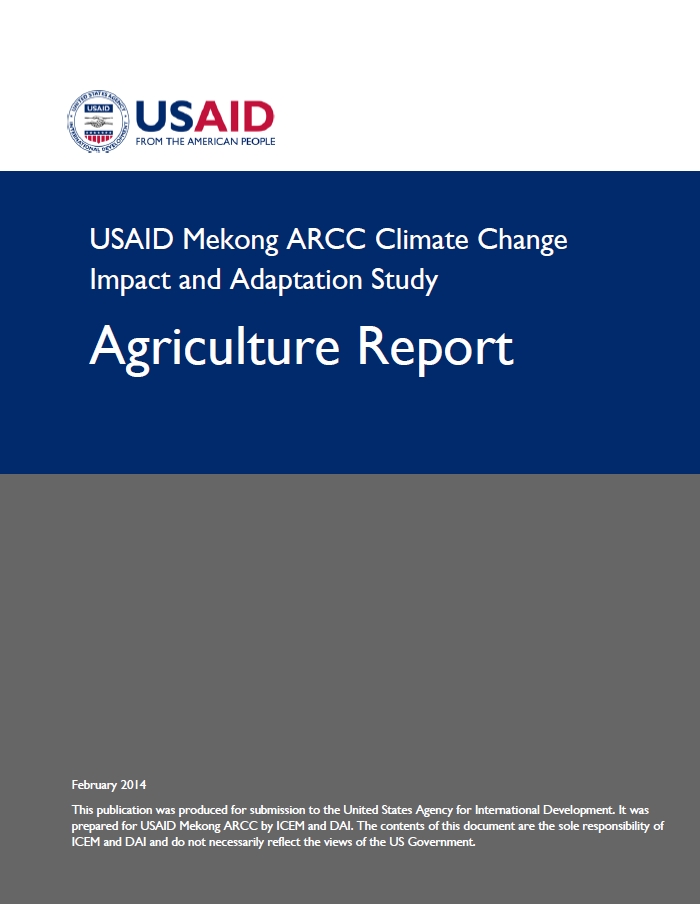USAID Mekong ARCC Climate Change Impact and Adaptation Study: Agriculture Report
Growing conditions for agriculture are diverse in the Lower Mekong Basin (LMB), from the mountainous areas of Lao PDR and the Central Highlands in Vietnam to the lowland plains in the Mekong Delta. Farming systems range from traditional shifting agriculture systems dominated by upland rice through industrial plantations, including smallholder intensive rice farmers.
Rainfed agriculture is the dominant type of agriculture in the LMB. Rainfed rice is the dominant crop, representing 75% of the agricultural area within the LMB. Other commercial crops such as maize, soybean, or cassava, which have growing importance in farming systems in the region, are mostly rainfed. Therefore, agriculture, a key sector of the economy within the LMB, is highly dependent on climate and especially on rainfall frequency and distribution. With more than 1,000 mm of rainfall per year in the LMB, water shortage is not the primary constraint for agriculture. Instead, it is the un-predictability and variability of rainfall distribution during the rainy season that can lead to drought, water stress, and low yields.
Agriculture is a dynamic sector in the LMB. The production of the major crops has doubled in the last 20 years. The increase in production is resulting from an intensification of production, which is reflected in higher yields rather than strong growth in cultivated area. However, new areas for cultivation are opening in Lao PDR, the Vietnamese Central Highlands, and Cambodia. Meanwhile available arable land in Northeast Thailand is decreasing.
In the LMB, around 50% of rice output is produced in the Vietnamese Mekong Delta, followed by Northeast Thailand (around 30% in 2003). Vietnam and Thailand are among the five leading rice exporters in the world. If we include the Chao Praya Delta in Thailand, the volume of rice exported from this region represents more than 51% of rice exported worldwide (FAOSTAT 2008). There are a number of different drivers influencing the agriculture sector in the LMB. It is estimated that food production will need to grow by 25% in the next 15 years to supply a growing population. In addition, an increasing urban population will bring changes in labor availability in the farming sector, changed patterns in food demand; and conflict over land and water use to meet the requirements of growing cities. While there are different dynamics according to local demand and crop suitability, there has also been a steady trend across LMB countries toward commercial crops and production systems at the expense of subsistence rice-based systems. For example, maize is now found across all countries.
Cassava, while originally farmed in Thailand and the Vietnamese Central Highlands, is now starting to be found also in Lao PDR and Cambodia. Sugarcane is farmed mostly in Northeast Thailand with more than 70% of the planted area in the LMB. The expansion of other commercial crops and industrial plantations like rubber, coffee, and eucalyptus are driven by market demand and foreign investment. In the future, it is estimated that demand for bio-fuel (soybean, maize, sugarcane), animal feed (cassava), and starch (cassava) will rise and the demand for rubber and sugar will continue to be strong. Location-specific factors are also driving changes at the local level. For example, soil and groundwater degradation and a lack of rural labor have resulted in a shift from coffee to rubber plantations in the Vietnamese Central Highlands in recent years.














